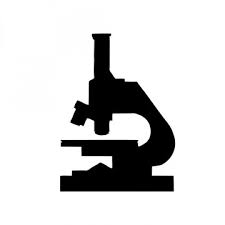
Within the last 2 years (2010 written), new DNA sequencing technologies, dubbed NextGen (“next generation”), have been introduced that are revolutionizing the field of neurogenetics. As these advances gain recognition within and outside the medical community, the pace of progress is quickening, with the help of support from broad-based advocacy groups and more funding options. These technologies are already bringing greater diagnostic opportunities to practice, although the time might not yet be ripe for translating the results into information useful for the clinical management of patients.
“For rare diseases, this is a real game-changer type of technology,” commented Matthew J. Huentelman, Ph.D., a neurogeneticist affiliated with the Translational Genomics Research Institute in Phoenix. “We have had some significant leaps in what we can do with the human genome over the past couple of years, especially in the mechanics and chemistry of how sequencing is done. Several companies have built machines that sequence DNA in fundamentally different ways than we did 5-10 years ago.” Since 2007, Dr. Huentelman has been applying NextGen technology to the study of Alzheimer’s disease and autism.
Whole exome DNA sequencing is one of the NextGen technologies that are being applied to neurologic disorders. Unlike whole genome sequencing, whole exome DNA sequencing focuses on the small portion of the genome (less than 2%) that contains protein-coding bits of DNA, known as the exome. For example, Dr. Murat Gunel, chief of the Neurovascular Surgery Program and codirector of the Program on Neurogenetics at Yale University, New Haven, Conn., recently used whole exome sequencing to determine that several distinct types of malformations of cortical development, including microcephaly, pachygyria with cortical thickening, and hypoplasia of the corpus callosum, were all associated with recessive mutations in a single gene, WDR62 (Nature 2010;467:207-10).This discovery was made by analyzing the DNA of several children with microcephaly among 30 interrelated Turkish families.
The last few months have brought other reports that used whole exome sequencing to identify causative gene mutations for Perrault syndrome (Am. J. Hum. Genet. 2010;87:282-8), Joubert’s syndrome (Am. J. Hum. Genet. 2010;86:93-7), and Fowler syndrome (Human Mutation 2010;31:918-23).
One advantage of exome sequencing studies is that researchers can use smaller sample sets – with an “n” as small as 1 – in a comprehensive fashion, Dr. Huentelman said. “This is great for rare diseases or to gain a foothold in a disease that has been hard to understand at the population level. For instance, we can analyze the differences between twins discordant for autism.”
Advantages of exome sequencing include its speed and cost-effectiveness. Dr. Gunel reports that in his laboratory, whole genome sequencing might take several weeks and cost about $50,000 while he can receive the results of whole exome sequencing within 9 days, at a cost of-about $3,500.
“These tests are still pricey,” said Dr. Andrea Gropman, a neurogeneticist at the Children’s National Medical Center and George Washington University, both in Washington. For sequencing genes related to autism, she said, costs might range from $1,000 to $5,800, which insurance companies might or might not cover. “For some families, that means they must pay out of pocket.”
New Funding Opportunities
Advances in the field might be attributable, in part, to greater funding opportunities. Dr. Gunel’s research was supported in part by a $2.9 million “stimulus grant” from the National Institute of Neurological Disorders and Stroke, part of the $8.2 billion provided to the National Institutes of Health from the American Recovery and Reinvestment Act. He plans to use his stimulus money to extend whole exome sequencing to hundreds of other families affected by malformations of cortical development. …
New Methods, Funding Propel Neurogenetics
MAGAZINE ARTICLE
By Schonfeld, Amy Rothman
Clinical Psychiatry News , Vol. 38, No. 12
Contributors:
Schonfeld, Amy Rothman
Clinical Psychiatry News
December 2010
Vol. 38, No. 12


